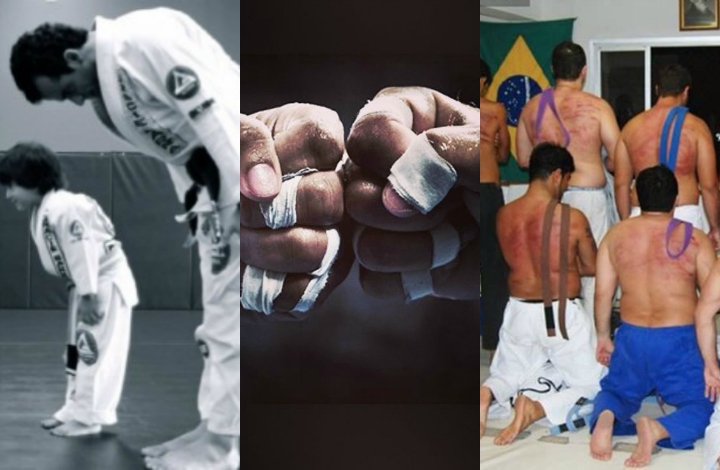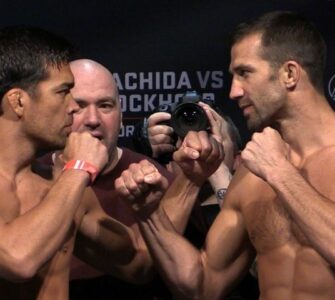Brazilian Jiu-Jitsu is usually a pretty laid back martial art/sport with a few set of traditions that come from Judo and are mixed with Brazilian or Californian culture. Here are a few traditions that you have probably encountered in your BJJ journey:
1.Lining up and bowing

These traditions are a way to demonstrate respect for your academy and instructor(s). Most of it was inherited from Judo, as we all know many Japanese arts give a big focus on respect, discipline and proper behavior during class. Students are usually aligned side by side by belt rank and facing the instructor. Their gis and belts must be properly tied and then at the end and start of each class the students will bow to the instructor(s) in a sign of respect. Some academies would have the students bowing as well when entering or leaving the mats.
2.Osss!
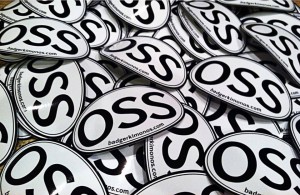
In many Jiu Jitsu academies you will often times hear instructors or students saying “OSS” (or OSU). Oss is a Japanese term and has many different meanings.
“OSS” is an abbreviation for Onegai Shimasu, which loosely translates into a request, a solicitation, an invitation like “please”, “if you may”.
“OSS”, also means Oshi Shinobu, with the message “never give up” or “show determination” which really applies to Jiu-Jitsu.
3.Not refusing a roll
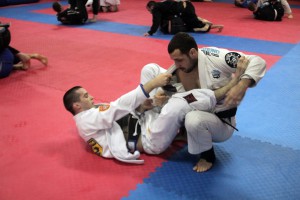
This is another point that comes form the Japanese matial arts culture. Martial arts were arts that were developed for war, so being tough and always ready to defend yourself is a big point in all of them, especially in the old days. This would as well demonstrate warrior spirit and a strong will power. Of course there is no shame in refusing a roll if you are injured. I am sure that if you love the “gentle art” you want to keep training it for several years and training over an injury isn’t something you want to do if you plan to go far in this sport.
4.The gauntlet/belt whipping
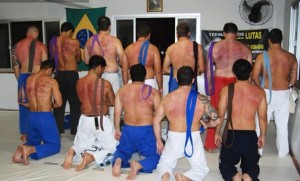
Gauntlet/tunnel is where you take your gi jacket off and get whipped by your teammates with their belts.When a student graduates from one belt to another, some academies mark the accomplishment by making the new belt walk the belt whipping gauntlet.
The gauntlet is similar to a gang initiation, where the new gang member gets beat up by all the other gang members, to pass the ‘test’.
Many major BJJ instructors are against the gauntlet, including Caio Terra who shared his opinion:
Tonight we had belt promotions and for the first time we did NOT do the gauntlet.
In this day in age we should not condone hazing or impose it on people who don’t want to do it IMO, we are too smart for that.
If people want to do the gauntlet it’s their choice. Congrats to every one who got promoted, for those who did not keep training and keep working hard. Your time will come!
5.Not asking a higher belt to roll

Paul Stolyar (black gi, second from right)
This is an old school rule that many black belts used to stay away from rolling with white belts, since they would prefer to roll with more technical guys and fine tune their technique. Some would see it as a sign of disrespect to the hierarchy of belts as well if having a lower belt asking them to roll, but honestly there are many black belts that don’t care about this rule. Actually some black belts actually encourage lower belts to roll with more advanced people and the reasons can be several. It could be that this black belt is a really helpful guy and wants to help his training partners to improve, so the overall level of the academy rises or it could be simply that he wants someone he can actually apply some technique he has been working on in an easier way. Of course everyone has the option to choose who they want or don’t want to roll with, but if you are an instructor it certainly would look bad if you don’t roll with each one of your students.
6.The slap and fist bump
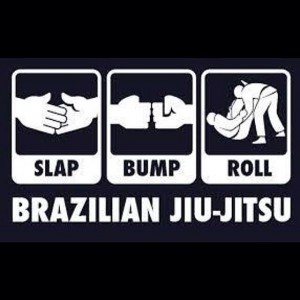
According to Brazilians who have been training for over 30 years, the normal salute in BJJ up to the late 90’s was just a hand shake. In the early 2000’s, a fad began in Brazil where Jiu-Jiteiros would do that slap and bump instead of a regular handshake
My take on it is that it was a brazilian fad that got to the mats, and from there the Jiu-jiteiros took it worldwide.
What does it mean? It distinguishes the beginning of the roll or match and is a promise from both Jiu-Jiteiros to keep it friendly and fair, in a form of mutual respect.

